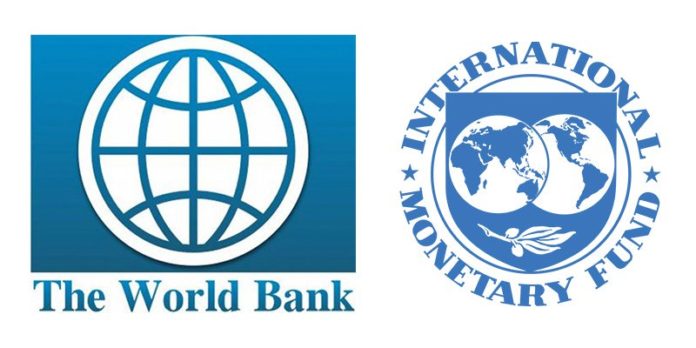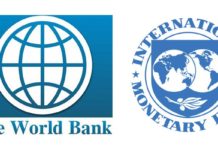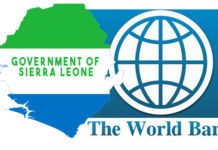
By Mahmud Tim Kargbo
For the last two years, the world economy has been rocked by multiple shocks from the COVID-19 pandemic to the ongoing NATO proxy war taking place in Ukraine. But not all countries and people have been impacted in the same way. The financing divide is sharply curtailing the ability of many developing countries like Sierra Leone to respond to shocks and invest in recovery.
In the wake of the COVID-19 pandemic, developed countries financed massive fiscal response packages (worth 18 percentage points of GDP) at very low-interest rates, backstopped by their central banks. Developing countries were more constrained. Poorest countries like Sierra Leone, in particular, were forced to cut spending in areas such as health and infrastructure and added VAT on essential commodities like fuel, contributing to a more protracted crisis. Even before the fallout from the war in Ukraine, 1 in 5 developing countries was projected not to reach 2019 per capita income levels by the end of 2023, with investment rates not expected to return to pre-pandemic levels for at least two years.
This subdued investment recovery further widens large climate and Sustainable Development Goal (SDG) investment gaps. Yet, many developing countries like Sierra Leone are in no position to finance the necessary investment push. At the beginning of 2022, 3 in 5 of the poorest countries were at high risk of or already in debt distress, and 1 in 4 middle-income countries was at high risk of fiscal crisis. Rising energy tariffs and food prices due to the war in Ukraine have put additional pressures on fiscal and external balances of commodity importing countries like Sierra Leone, and tightening global financial conditions are raising risks of a systemic crisis. Debt sustainability concerns, which tend to arise at lower levels of debt in developing countries like Sierra Leone, translate into higher risk premia. Even in countries where debt is considered sustainable, the high cost of borrowing precludes needed investment.
Cost of capital in Sierra Leone And Other developing countries:
Developing countries’ average interest cost on external borrowing is three times higher than that of developed countries In the low-interest environment of the last decade, developed countries borrowed at an interest cost of an average of 1 per cent. Least developed countries (LDCs), which have increasingly tapped international markets in recent years, borrowed at rates over 5 per cent, with some countries paying over 8 per cent. This has dragged up their average borrowing cost and translated into less fiscal space: LDCs like Sierra Leone dedicate an average of 14 per cent of their domestic revenue to interest payments, compared to only around 3.5 per cent in developed countries, despite the latter’s much larger debt stocks.
While this high cost of borrowing reflects higher perceived risks, there is evidence of an additional premium associated with sovereign borrowing. Over the last 200 years, the average annual return of foreign currency debt to investors has been around 7 per cent, even after accounting for losses from defaults, exceeding the “risk-free” return on U.S. and U.K. bonds by an average of 4 percentage points. Since the start of the emerging market ”bond finance era” around 1995, total returns to investors (net of losses from defaults) have been even higher, averaging almost 10 per cent or around 6 percentage points over the risk-free rate—a historical high.*
The average interest cost of outstanding government debt, in per cent
Foreign currency bonds more than compensate investors for the risks they face—even through periods of repeated financial turmoil in developing countries. Indeed, external sovereign bonds have been the best-performing asset class since 1995, outperforming other asset classes (such as equities or corporate bonds) even after adjusting for both defaults and risk (measured by market volatility). While sovereign spreads and risk premia may seem removed from people’s lives, in the case of sovereign debt, they have a direct impact. High investor returns equate to high borrowing costs for Sierra Leone and other developing countries, that are diverting government expenditures from public investment and social services.
A multifaceted policy response:
On the right terms, debt financing can enable countries to respond to emergencies and fund long-term investments. Productive investments, in turn, enhance growth and fiscal capacity, thus generating the resources to service debt sustainably. On the other hand, for countries with large debt overhangs, additional lending can be counterproductive, and debt relief and more grant financing are indispensable. The challenge is to increase access to affordable long-term financing (and grants where appropriate) and to use proceeds productively. While there is no one solution to increase countries’ fiscal space, steps to do so include national actions, international public finance, and efforts to improve terms and reduce credit spreads associated with commercial borrowing. The “2022 Financing for Sustainable Development Report” puts forward recommendations in four areas to bridge the “great finance divide.”
First, countries should reduce risks and ensure that all financing is aligned with the SDGs and climate action. The efficiency of public investment is a key determinant of its growth and debt sustainability impact, and efficiency gaps remain sizeable in many countries. Linking public investment decisions to a medium-term fiscal and budget framework and debt management strategy—for example, in the context of an integrated national financing framework—can reduce the volatility of financing for capital expenditure. But national actions alone cannot solve systemic challenges.
Second, access to additional long-term affordable international public finance is critical. Official development assistance commitments must be met and Multilateral development banks (MDBs) lending should be expanded, including through capital increases and rechanneling of unused special drawing rights. MDBs themselves can improve lending terms, for example, through ultra-long-term loans and systematic use of state-contingent clauses in their own lending. In addition, the entire “system of development banks” should be strengthened: MDBs can extend capacity support to national institutions, and MDBs can in turn benefit from national banks’ knowledge of local markets.
Third, the international community can take measures to improve developing countries’ borrowing terms in markets. As global sources are dominant drivers of the volatility of capital flows, addressing leverage and volatility in the international financial system is essential. Steps can also be taken to reduce the premia associated with the high cost of sovereign borrowings, such as by strengthening the information ecosystem and lengthening time horizons. Extending the horizon of credit ratings (which are often only for up to three years) and debt sustainability assessments would provide insights for long-term-oriented investors.
Fourth, the international community urgently needs to step up efforts to resolve unsustainable debt situations. A multilateral debt relief and restructuring initiative may become necessary as global interest rates and risks of a systemic debt crisis rise. Systemic solutions should be pursued now before large debt servicing payments come due in 2023. They should be discussed in an inclusive forum that brings together creditors and debtors. The United Nations, recognised equitable wealth sharing civil society organisations and organisations set up to represent the interests of various continents could provide such a platform.




